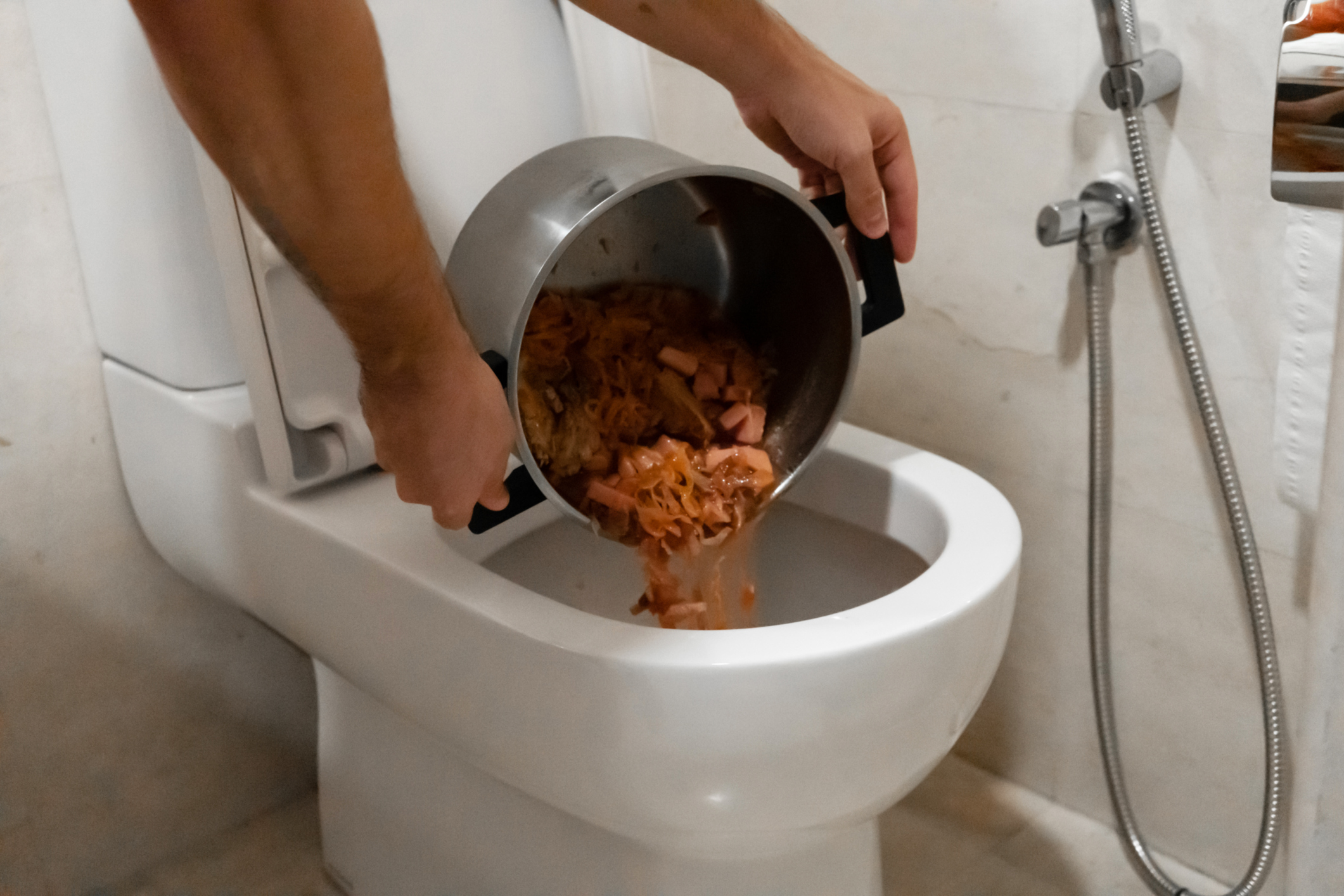Is it Feasible to Dispose of Food Waste in the Toilet?
Is it Feasible to Dispose of Food Waste in the Toilet?
Blog Article
The publisher is making a few good annotation on the subject of Think Twice Before Flushing Food Down Your Toilet overall in this content further down.

Intro
Many people are usually confronted with the problem of what to do with food waste, specifically when it pertains to leftovers or scraps. One common inquiry that emerges is whether it's okay to flush food down the commode. In this post, we'll explore the reasons individuals may consider purging food, the effects of doing so, and alternate approaches for proper disposal.
Reasons why people may take into consideration flushing food
Absence of understanding
Some people might not be aware of the prospective damage caused by flushing food down the toilet. They may wrongly believe that it's a safe technique.
Ease
Flushing food down the commode might look like a fast and very easy remedy to dealing with undesirable scraps, particularly when there's no nearby trash can offered.
Negligence
Sometimes, individuals might just pick to flush food out of large idleness, without taking into consideration the effects of their actions.
Consequences of flushing food down the commode
Ecological impact
Food waste that ends up in rivers can add to contamination and injury aquatic communities. In addition, the water utilized to flush food can strain water sources.
Plumbing issues
Flushing food can cause stopped up pipes and drains, creating expensive pipes repair work and troubles.
Kinds of food that need to not be purged
Coarse foods
Foods with fibrous structures such as celery or corn husks can get tangled in pipes and cause obstructions.
Starchy foods
Starchy foods like pasta and rice can absorb water and swell, leading to blockages in pipelines.
Oils and fats
Greasy foods like bacon or cooking oils should never be flushed down the bathroom as they can strengthen and cause clogs.
Appropriate disposal approaches for food waste
Making use of a garbage disposal
For homes furnished with garbage disposals, food scraps can be ground up and flushed via the pipes system. Nevertheless, not all foods are suitable for disposal in this way.
Recycling
Particular food product packaging materials can be recycled, reducing waste and decreasing environmental influence.
Composting
Composting is an environmentally friendly way to throw away food waste. Organic materials can be composted and utilized to improve dirt for horticulture.
The importance of appropriate waste administration
Minimizing ecological injury
Proper waste management practices, such as composting and recycling, aid minimize contamination and preserve natural deposits for future generations.
Protecting pipes systems
By staying clear of the technique of flushing food down the bathroom, home owners can protect against pricey plumbing repair services and maintain the honesty of their plumbing systems.
Conclusion
Finally, while it may be tempting to flush food down the bathroom for ease, it is very important to recognize the potential repercussions of this action. By adopting proper waste management techniques and getting rid of food waste properly, people can add to healthier pipes systems and a cleaner atmosphere for all.
FLUSH FOOD DOWN THE TOILET?
FLUSHING FOOD CAN CAUSE BLOCKED DRAINS IN YOUR HOME
All of the plumbing fixtures in your home are connected to the same sewer pipe outside of your home. This outdoor sewer pipe is responsible for transporting all the wastewater from your home to the Council sewer mains. Even small pieces of food that go down the kitchen sink can cause problems for your sewer. It should therefore be obvious that flushing larger bits of food, such as meat, risks a clog in either the toilet itself or the sewer pipes. Flushing greasy food is even more problematic because oil coagulates when it cools, coating the interior lining of your pipes.
THE TOILET IS NOT A BIN
Food isn’t the only thing that people shouldn’t be flushing down the toilet. People use the toilet to dispose of all kinds of things such as tampons, makeup wipes, dental floss, kitty litter and even underwear. Water goes to great lengths to educate residents about the high costs and stress placed on wastewater treatment systems simply from people flushing the wrong stuff down the toilet. It costs taxpayers millions of dollars each year, and homeowners thousands in blocked drain repairs.
FLUSHING FOOD IS A WASTE OF WATER
Flushing food is a waste of our most precious resource - water. In June this year Level 1 water restrictions were introduced to protect water supply from drought conditions. Much of New South Wales continues to be affected by prolonged drought with recent figures revealing up to 97 per cent of the state remains in drought. Depending on whether you have a single or dual flush toilet, every single flush uses between five and 11 litres of water. In the current climate this is a huge amount of water to be wasting on flushing food that should be placed in the bin (or better yet, the compost).
https://www.jabplumbingsolutions.com.au/blog/can-you-flush-food-down-the-toilet

I'm very serious about and I really hope you enjoyed reading the entire blog entry. Sharing is nice. Helping others is fun. We thank you for your readership.
Try Here Report this page